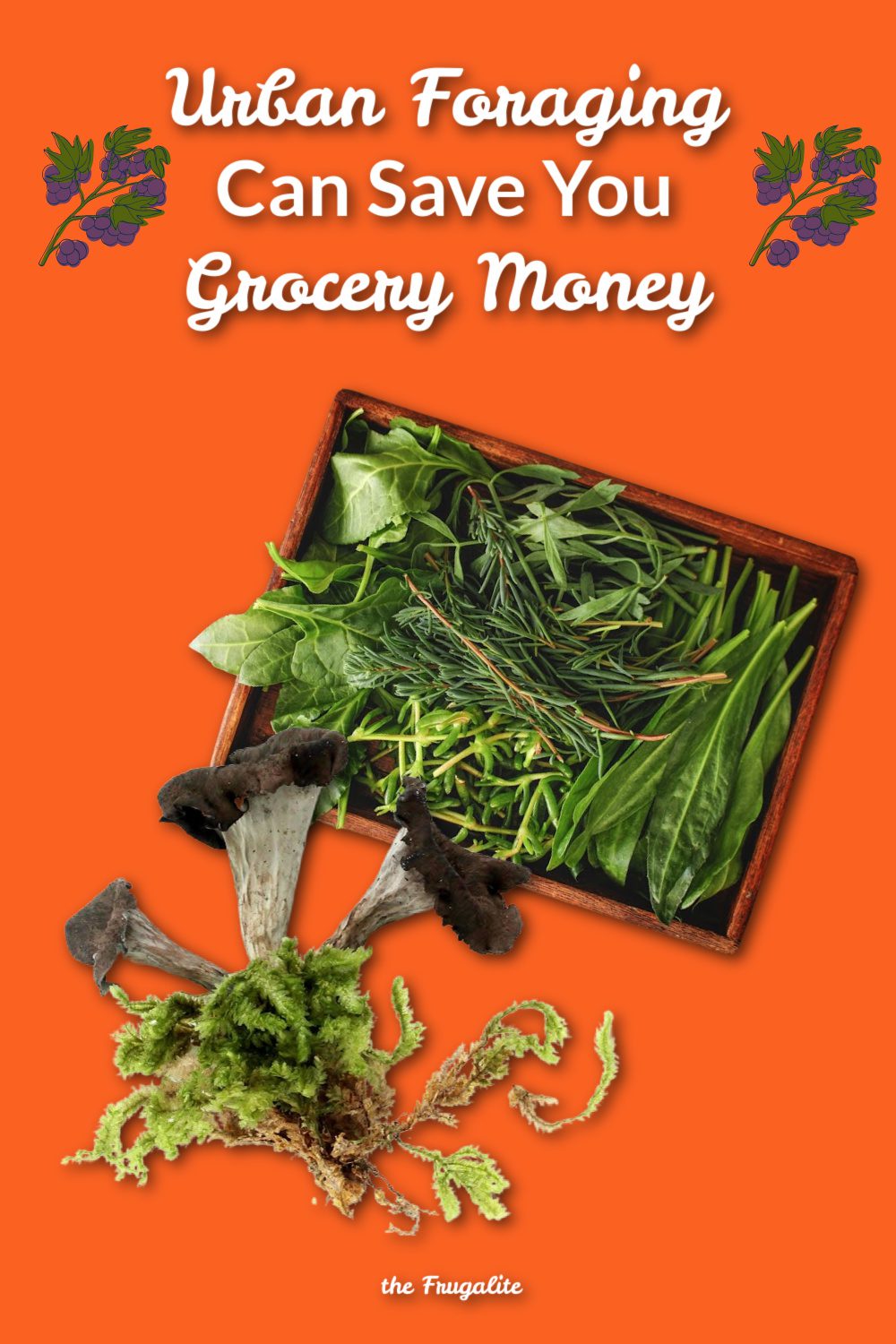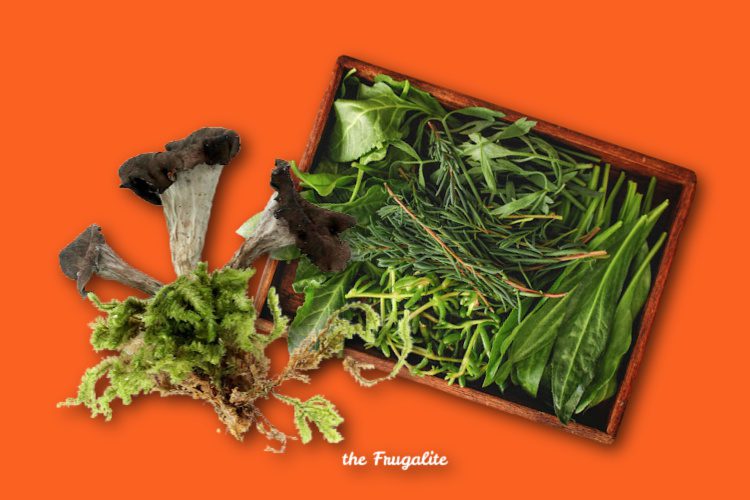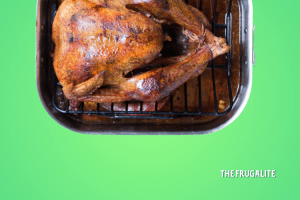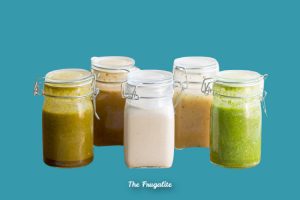(Psst: The FTC wants me to remind you that this website contains affiliate links. That means if you make a purchase from a link you click on, I might receive a small commission. This does not increase the price you’ll pay for that item nor does it decrease the awesomeness of the item. ~ Daisy)
In these days of shortages and rising inflation, it can really be a challenge to feed ourselves and our families. In the city, space to grow food is a bit limited, and farmer’s markets only happen during the summer. Everything needs to be brought into the city and, given our JIT (Just In Time) supply chain, it’s no wonder that store shelves have emptied very quickly over the past two years.
Take heart, however!
There are many things we can do to help ourselves and feed our families. We can start with The Pantry Bundle Plus, which teaches us how to build a stockpile using just our grocery money.
Another method we can try is urban foraging.
The art of identifying and collecting the wild foods growing freely around your city can be an excellent means of cutting costs at home. Think tree nuts/fruits, plant roots, even flowers, and mushrooms!
You’ll want to do some careful research and consult several region-specific field guides in order to be able to identify the edibles and, most importantly, the non-edible to poisonous! If there’s a wildcrafter in your area, paying for lessons might be an excellent investment as well. This is very important because eating the wrong thing can make you sick or even dead!
Remember the old adage: when in doubt, throw it out! This applies to foraging as well as to the food already in your pantry. So, if you decide to give urban foraging a try, do your research first. Another good strategy would be to start with the things you know, such as dandelion, hickory nuts, crab apples, or turkey of the woods, and work your way up from there. Learn about one new tree, flower, or fungus every day, and your knowledge will grow over time. There are various plant ID mobile apps available as well.
Before you take one step outside, take a look at your city’s regulations.
For example, it’s generally illegal to forage in national parks. However, where I live, the rules are slightly different. Foraging is allowed on federal and state lands, but counties and municipalities are allowed to set their own rules. If you’re on private land, you’re required to ask permission. So always research the regulations applicable to your specific situation before going out.
There are a few other rules to follow when foraging. In addition to knowing what you’re gathering and your local laws, a good rule of thumb is to take only about 1/3 of what you find in any given spot. By leaving some behind, you allow the patch to grow back for future harvests. If the patch is very small, passing it by isn’t a bad idea. Someone may have beaten you to it, and taking the last of it helps no one in the long run.
If you have children, take them along! In addition to being a Frugalite cheap activity, urban foraging can be very family-friendly and educational. Your children will learn about plants and nature, as well as many pro-social behaviors that will serve them well in later life. As an added bonus, they’ll get plenty of exercise and fresh air!
So how might you find foraging locations?
There’s a map for that! Falling Fruit is an interactive map showing urban foraging locations all over the world. It’s a relatively new project, so not every location is covered, but it’s growing daily. Anyone can add locations, and the data is downloadable with some caveats. Those are listed on the site.
Still feeling overwhelmed? Start in your own yard! That’s what I did in 2017 when my back went out to the point that I couldn’t maintain my usual garden. I harvested & cooked my first dandelion greens, discovered garden sorrel and garlic mustard, and learned that the wood violets I so love are actually edible!
One day I’m going to have to give the ox-eye daisy a try! My cats love the free catmint that showed up one day and has grown every year since, and I have a perennial oregano as well. Check out this article on edible plants common in the average yard. In my case, my city considers many of them noxious weeds and insists that I keep them trimmed below a certain height. I’m happy to comply! Another favorite resource is Midwest Foraging, a field guide specific to my area. Perhaps your area has one as well.
The benefits of urban foraging are many!
Who doesn’t want a reason to get out and explore the neighborhood? In addition to finding food, we better learn what’s going on and something about who our neighbors are. We interact with our neighbors and our environment. Isn’t that better than sitting around on (anti-)social media?
While foraging isn’t likely to replace the grocery store or the garden, it can add some food security to our lives and diversity to our meals. Every little bit adds up, right? The food is higher in nutrients than the stuff that was harvested too early and shipped a long distance to your table.
Be sure to wash what you harvest, however! Chemicals are everywhere. Many parks are sprayed with various pesticides to keep diseases under control. While these treatments do kill pests, they’re not good for you either. Soil contamination is a thing in the cities. Roadsides, railroad sites, industrial sites, and golf courses can be very contaminated.
Your city might even have a Superfund site or toxic waste dump to avoid! Some mushrooms absorb these pollutants and become dangerous to eat. In addition to washing, removing the outer layer of greens and peeling roots can reduce your risk of exposure.
Urban foraging is a Frugalite-cheap way to stretch your grocery dollar.
While it might seem a bit overwhelming at first, starting small and learning something new every day can really help. You’ll add nutrition to your diet and knowledge to your toolbox! If you find enough herbs around town, you might even want to become an herbalist! The Herbals Skills Intensive course can help you turn common “weeds” into medicine. What’s not to love? Do you forage in your city? Let us know in the comments below!
About Amy Allen
Amy Allen is a professional bookworm and student of Life, the Universe, and Everything. She’s also a Master Gardener with a BS in biology, and has been growing food on her small urban lot since 2010.












10 thoughts on “Urban Foraging Can Save You Grocery Money”
Well done!!
Love this article!!
Thank you so much!!
You’re welcome! And good luck on your journey.
I love the crack about “anti-social media!” I practically cheered. In the desert southwest you can often find prickly pear cacti by the roadside. They have very tasty fruit but you want to gather them with gloves, because they have microscopic spines that need to be singed or scrubbed off. Golden barrel cactus makes a good fruit too that is pretty prolific and common. Less spiny too.
Just a couple for my fellow dwellers in dry places!
Indeed. I deleted my FB account because there’s just nothing positive there anymore. I’ve seen people on NextDoor argue about the smallest things! No thanks. To me, it shows an ugly side to people better left unseen.
Good to know about the cactus! I think Native Americans from that area used that resource. Good luck on your journey!
I hear you about NextDoor. I pulled way back from that as well.
There’s a ton of food in many deserts if you know where to look. The Sonora desert, where I live, for example. Edible tubers, tons of cactus fruit, plants. People also eat the young prickly pear pads, not just the fruits, or pickle them as nopalitos. Mesquite beans can be ground into flour or chewed as they are. Quite abundant and quite tasty. You can even eat agave or desert chia! Plenty of useful plants too like aloe. The desert can be a regular breadbasket – if you are careful about where and how you collect.
Another possibility is, when you see pear or apple trees in town where nobody picks up the fruits as they fell and rot in the grass. If you are not afraid of heights, have a safety belt and some baskets, you can ring at the door and asks politely if you can pick up the apples or pears freely. You can say: “You will get the harvest; half of the baskets are for me and the other half for you”. You may get the person interested; most of the time, the people have health problems with their knees or back and they would appreciate your offer.
Absolutely! Why waste those perfectly good fruits? I think the home owners will be especially appreciative now, since they’re shopping in the same grocery stores you are. We need to get creative in order to eat, expand our knowledge of what’s edible, and try new things. This bland diet that we’ve gotten used to over the years is no longer serving us.
Garlic mustard is an invasive plant that chokes out native plants. I take no issue with someone eating it but do not plant it. And if you do not eat it, pull it. This is the only instance where I use herbicide. Dye in the tank to ensure no over spraying and only when safely away from “wanted” plants. Ask your local park district/DNR/extension how bad this plant is.
Regarding what your town rules say about what greenery you are not allowed to have growing in your back or front yard and what you are allowed. Do not assume that the code enforcement mob is 100% knowledgeable about those rules nor is it wise to assume that they can even recognize what greenery that you have. Some years ago my town adopted some rules that gave them authority to threaten residents with fines as much as $2,000 PER DAY if a resident does not correct (within 10 days) whatever alleged misdeed that Code Enforcement claims the resident committed. In my case their threat was about two large pieces of greenery on both sides of my front walk. They demanded that I cut them down or suffer the financial consequences — equal to about what court punishment is in my state for DWI conviction. After reading the city ordinance in detail I discovered that garden plants were excluded from Code Enforcement’s authority! So I explained to them that if they insisted on pressing such charges against me … I would file charges against them with the county attorney for felonious extortion (since that new $2,000 per day fine threat was well above the minimum needed to be considered a felony, AND that my two plants were simply giant asparagus garden plants which were excluded per city ordinance from their authority). Once I explained this to Code Enforcement they not only stopped communicating with me but have even remained silent in all the years since then.
So read your city ordinance carefully as to what you are allowed to grow and where because a Code Enforcement office may be power hungry without knowing (or caring) what the local rules are that they are obligated to follow.
–Lewis
No need to urban forage. Get free food at your local Food Pantry. Also consider Dumpster Diving. Some Stores throw out perfectly good food. Also, apply for Food Stamps.